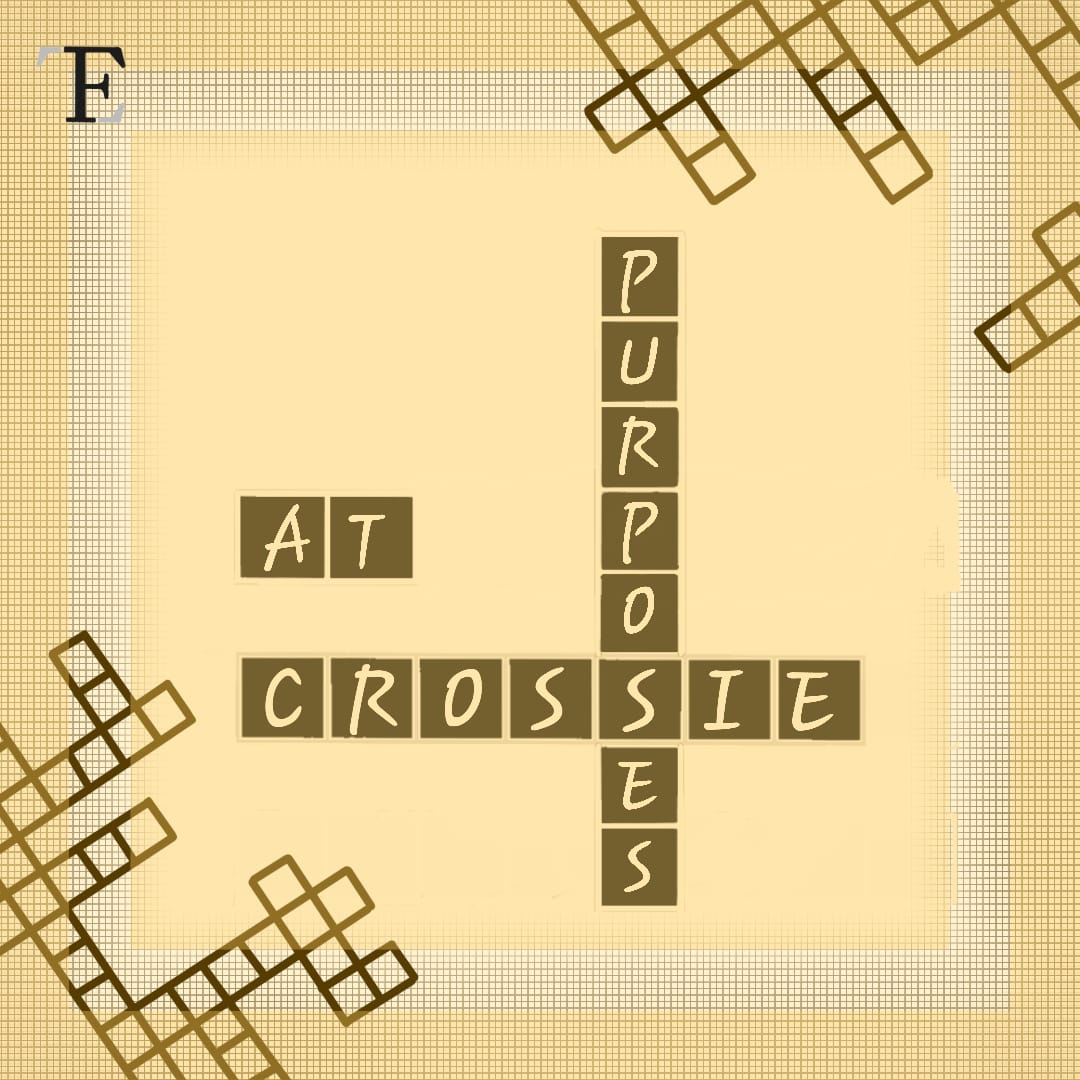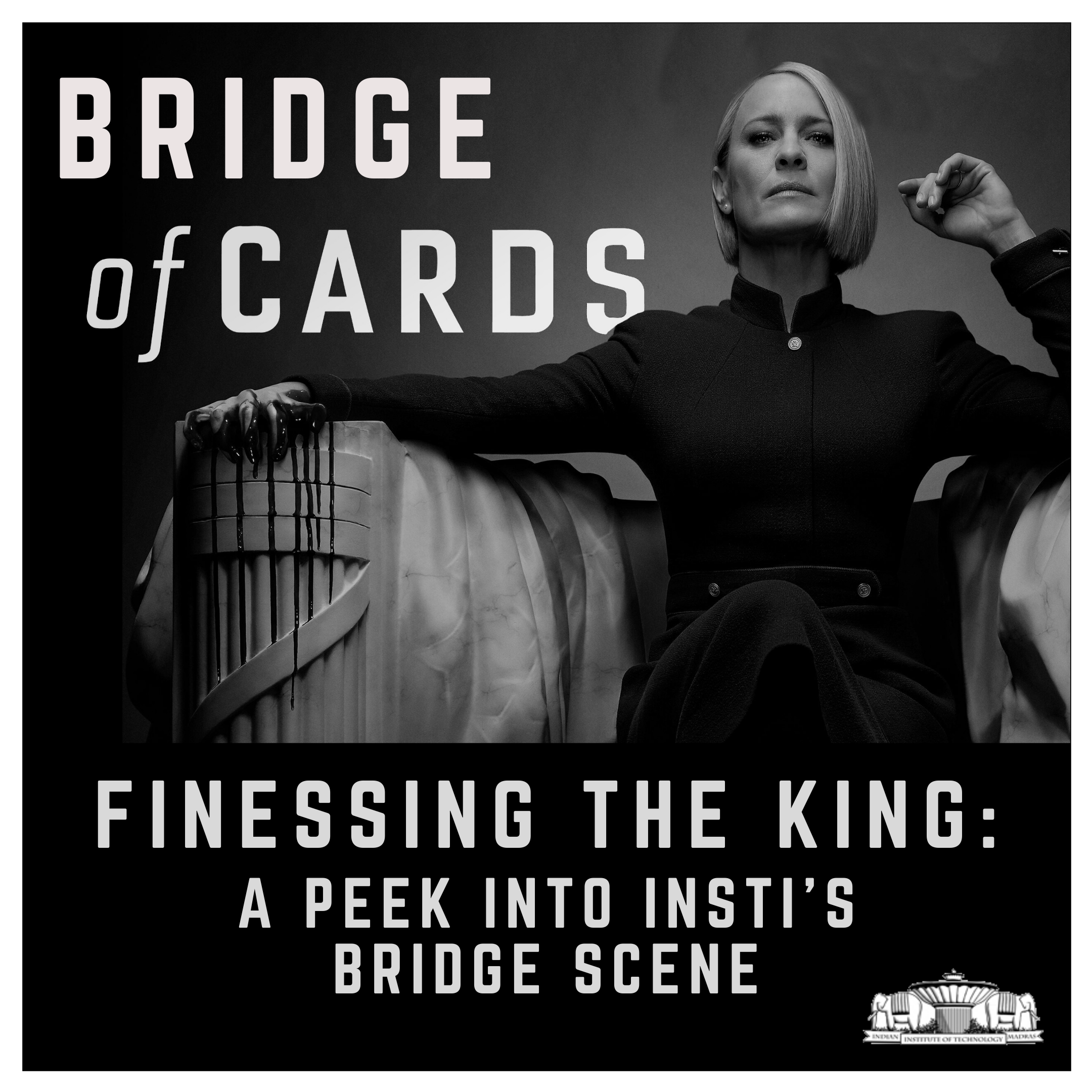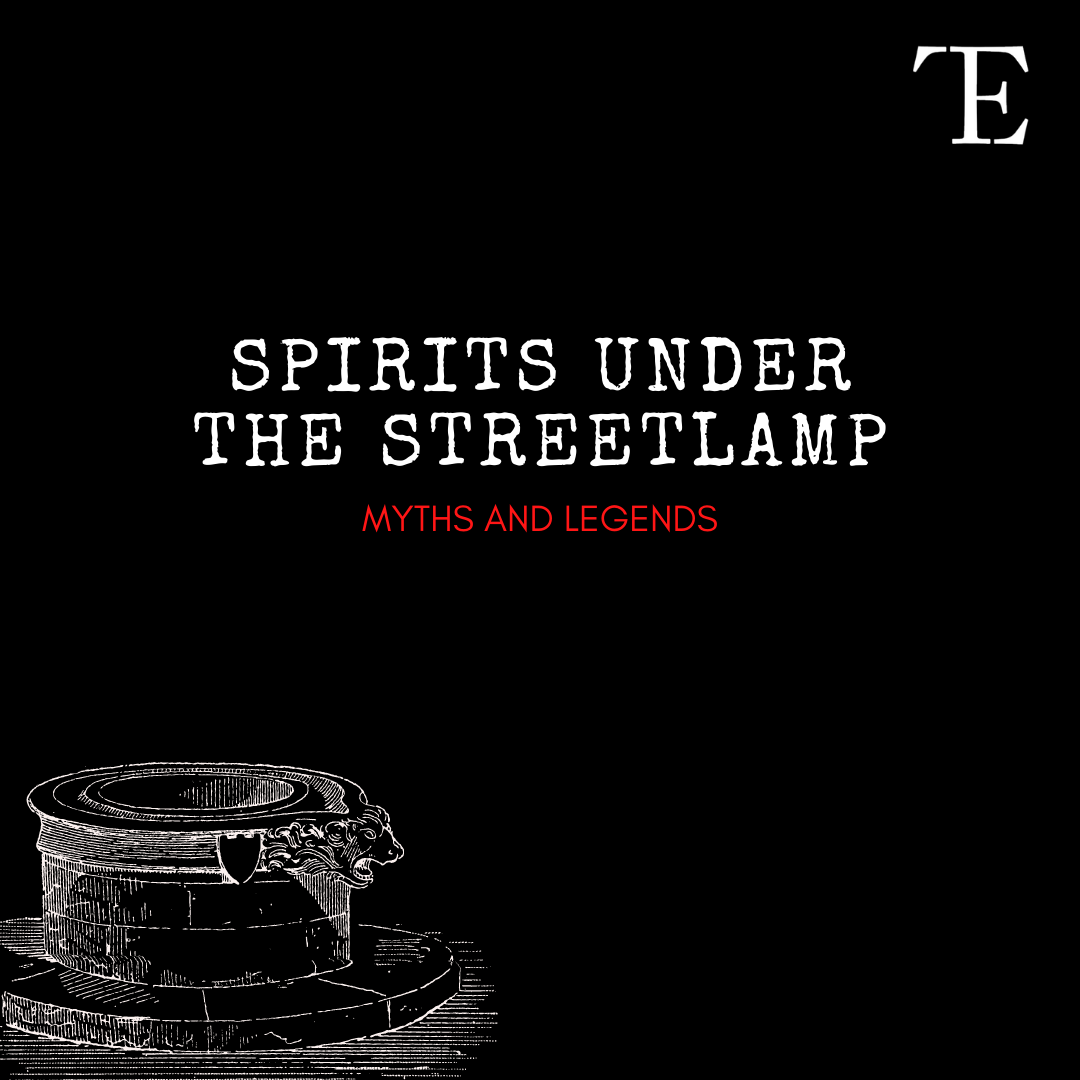Edited by Neha Cherian | Design by Yash Suryawanshi
I’m nodding off through yet another soporific online physics lesson when my phone chirps, jerking me awake. I scramble for it, nearly knocking it off my table in the process.
Clue: Refuse clothing period (7)
(Vivan Bhatt, WGC ‘21)
I scratch my head over it for a bit—how can you refuse a clothing period? Maybe ‘refuse clothing’ could refer to nudity? Nah… maybe it’s ‘refuse’, meaning trash. Yes, that could be it. and then ‘clothing’ could be garb…and ‘period’ could mean a time period, like age. Of course, it’s GARBAGE!
Unfortunately, this takes me a good few minutes to consider, and when I do look up from my phone, the class has moved on to a new topic. Oh well; academics are a write-off. Word games come first, after all.
The Word Games Club is one of IITM’s older clubs, with many interesting offerings—from Scrabble to Potpourri, and What’s The Good Word to Pun Off. However, the best-loved type of word puzzle is the cryptic crossword, known to the initiated as “crossie”. A clipping from an old campus newspaper made the rounds in our WhatsApp groups recently; it claimed that crossword puzzles would never go out of style with IITM students, and indeed it has been so for fifty-plus years. Unofficial crossword meets can run for hours in the evenings, and a dedicated group battles it out each year for the crossie crowns during LitSoc and Saarang. But what actually is “crossie”?
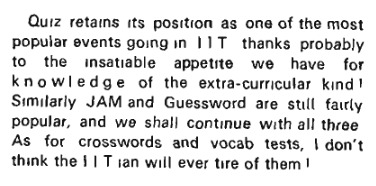
The Art of the Crossword
Have you ever turned to the crossword section of a newspaper, expecting a set of simple clues, but found a collection of meaningless sentences instead?
Or have you ever wondered what the answer to a clue like the one given below is?
Vegetable used in Andhra dishes (6)
(Incognito, THC #13558)
If you answered gunpowder, I’d be more than happy to let that slide, despite it being neither a vegetable nor six letters long—after all, who can think of Andhra food without gunpowder? Alas, that’s not it; read on to find out how to arrive at the answer. You can try the clue again, or just scroll to the bottom of the article if you’re feeling impatient.
A crossword typically consists of a 15×15 grid of black and white squares, with the latter to be filled by letters. Quick crosswords have straightforward clues which are simple definitions of the answers. For example:
Bloom (6)
The answer is “flower”. Ambiguities can exist, but are usually mitigated by connecting letters.
Cryptic crossword functions rather differently. Here, there is wordplay involved in getting from the clue to the answer.
Consider this:
Wets rejected food (4)
(Incognito, THC #13511)
Nobody in their right mind would reject food, so something else is going on here—but what? Most crossword clues follow a basic structure. Let’s break it down:
- The definition: this is the “straight” part of the clue, generally simply a synonym of the answer. Definitions usually appear at either end of a clue, and they exactly match the part of speech of the answer. In this case, the definition is “food”.
- The wordplay: this consists of indicators, which guide a solver in the right direction of wordplay, and fodder, the basis of words or letters with which the wordplay is done. Words indicating motion or change (e.g. dancing, messy) typically indicate anagrams. Words like “rejected” could indicate word reversals, like in the clue above… Getting anywhere yet? Meanwhile, if I anagram ‘cue trips’ to get ‘pictures’, the fodder is the letters ‘CUETRIPS’. It can also include standard substitutions, where a phrase or word stands in for letters. For example, if you see “speed of light” or “century” you could try putting in “c”. In our above clue, the “fodder” is “wets”.
- Finally, we come to the third part of a clue, which is the enumeration or “enum”. This is a number appended to the clue in brackets denoting the length of the answer. Here, the enum is four.
Now that we’ve assembled the toolkit, let’s try to solve the clue: the definition is “food”, so we want a four-letter word for some food. “Wets rejected” is telling us to reverse or “reject” the letters of “wets”, which we do to get the final answer: STEW!
The History of the Crossword
The birthplace of the cryptic crossword is the UK. British papers began to carry regular crossword puzzles in the 1920s, and by the middle of the decade they had started to publish interesting, more lateral variations on these puzzles. The first cryptic crossword setter was Edward Powys Mathers, better known under his setting name Torquemada.
However, it was the setter Afrit (Alistair Ferguson Ritchie) who initially articulated the ideas of being fair to the solver, famously saying, “You need not mean what you say, but you must say what you mean.” What he meant was that the clue can be misleading, but there has to exist a correct, logical interpretation by which a solver could arrive at the answer.
This idea was further refined by Ximenes (Derrick Somerset Macnutt), whose rigorous treatment of this idea of fairness has given rise to the Ximenean style of crosswords. That being said, non-Ximenean clues are often fun for the setter and rewarding for the solver, and most setters today treat the Ximenean principles as guidelines rather than rules set in stone.
The cryptic crossword is largely a British phenomenon; a lot of substitutions in crossword puzzles reflect common British slang or cultural references that might be unfamiliar to English speakers of other countries. Cryptics are less common in North America, where editors are typically stricter about rules but are popular in some other English-speaking commonwealth countries such as Australia.
In India, the most popular cryptic crossword is published by The Hindu. The paper has a rotating cast of setters, each with their own little idiosyncrasies: Incognito is good for beginners, while Dr X is reliable for at least one drug or medical reference. Meanwhile, other papers like the Deccan Herald also carry cryptics, though they have less devoted followings. Cryptic crossword puzzles have been written in other languages too—Tamil and Hindi come to mind, while some bilingual puzzles have been created incorporating both Telugu and English.
Crossie and Insti
Which brings us to the final point: crossie. Crossie is the name students of IITM have for cryptic crosswords, and has been a popular pastime for ages. In previous years, the crossword club would hold competitions where large grids were put up on boards and teams of two would sit wracking their brains to solve an anagram or spot an acronym.
Before the advent of online grids, each hostel would get several newspapers, with each half a wing receiving two: The Hindu and Indian Express. MS Swaminathan, an alumnus of the class of 1990, recalls two or three enthusiastic students fighting over the papers to get at the crosswords first, before they inevitably teamed up: “We gave up and said, ‘OK, we’ll all solve it together!’”
He also remembers his tenure as the joint crossword and treasure hunt club coordinator (the equivalent of a convener today), with four major responsibilities in a year: the Crossie Open, the Open Treasure Hunt, the Mardi Gras Treasure Hunt, and the Mardi Gras Crossie. It seemed odd to me to combine crossie and treasure hunt—at least, until he gave me some examples of treasure hunt clues, with the answers all being places in insti. Try these below!
- 981 m/s^2
- Come back the Chinese way
- Double trouble
The answers would direct you to:
- Gajendra Circle, or “GC”: g=9.81 m/s^2, c=100
- OAT: “The Chinese way” refers to the Tao, a “path” in Chinese philosophy, and “come back” indicates a reversal
- Jamuna Mess: Jamuna is known as “jam”, and “double trouble” is “jam mess”
All very similar to cryptic clues!
Nowadays, the club functions a little differently, on account of the internet. Students congregate in empty classrooms at night for involved “thunccs”, which are collaborative crossword solving sessions—grids range from beginners’ sets by Incognito to mind-numbing puzzles by Azed. When meetings (virtual or physical) are not possible, the WhatsApp group comes alive with clues set by avid procrastinators.

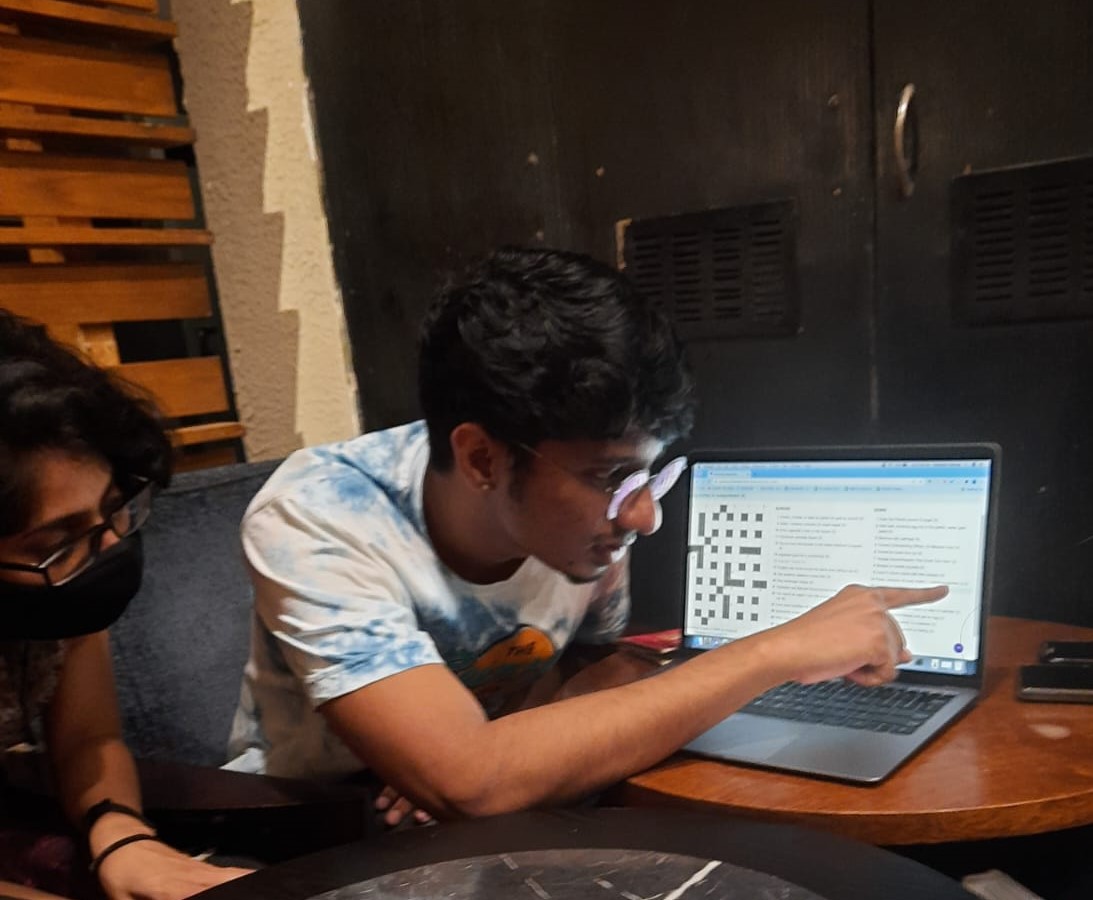
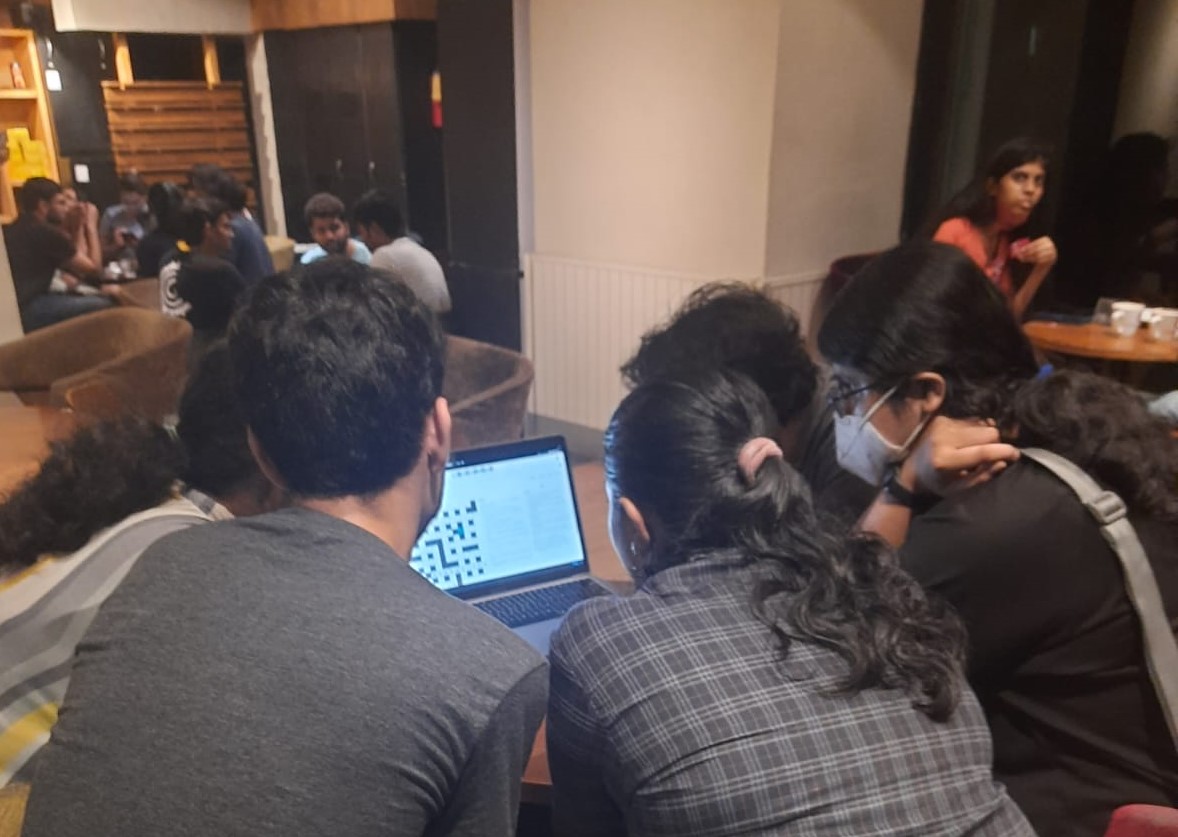
A “thuncc” at Cafe Coffee Day with the club members
Kumaresh Ramakrishnan, an alumnus of the class of 2020, was co-convenor of the Word Games Club when “thunccs” started. He recalls five or six people getting together over grids—”in Zaitoon or over a cup of coffee”. The social aspect was important and kept students involved. Kumaresh, who now sets grids under the name Zodiac, also described his journey into setting, from being “forced to set a Crossie Open” when the original person dropped out and solo setting two grids his convenor year, to now seeing his grids published online in blogs like The Hindu Crossword Corner and 1Across. “Setting… is more creative than solving”, and has fewer limitations, but tends to have lower student uptake.
Meanwhile ex-convenor Vivan, from the 2019 batch, notes that crossword puzzles intimidate a lot of students since it seems as though one needs “to be a linguistic legend to even try and attempt it”. However, he observes that “crossie remains nothing more than pure logic and is surprisingly mathematical in nature”, and it shouldn’t daunt anybody.
The club takes crosswords very seriously—until it doesn’t. Joke clues abound on the informal group, such as a set of five clues where the answers in order were NEVER, GONNA GIVE, YOU and UP. Or how about a literal list of different shades of grey to give FIFTY SHADES OF GREY? Brooklyn Nine-Nine fans will enjoy a set where the answers are all quotes from the show… including a very meta answer, “There’s a typo in this crossword puzzle!”
Speaking about his years solving crosswords, MS Swaminathan says, “Once the bug has bitten you, it stays for a long time… now I can’t look at an interesting word without anagramming it, you know.” Most members of the club would agree: it may be daunting initially but dive in head first and you’ll come to love all the whimsical linguistic devices and curious tricks that make up a quaintly intriguing shorthand of their own.
Crossword has been a popular hobby in insti for many years, and it continues to be one of the most exciting and enjoyable events on the club roster. If you find yourself bored during a physics class, or want to try an interesting new kind of puzzle—a cryptic crossword is a good bet!
(The answer to the clue given earlier is ‘radish’. Vegetable is the definition, “in” indicates that we should be looking ‘inside’ the words in what’s called a telescopic clue, and we see radish pop up as Andhra dishes. ‘Used’ is a connecting word.)
References
- Campastimes, September 1979: https://heritage.iitm.ac.in/artefact/pdf/002_002_1979-09

